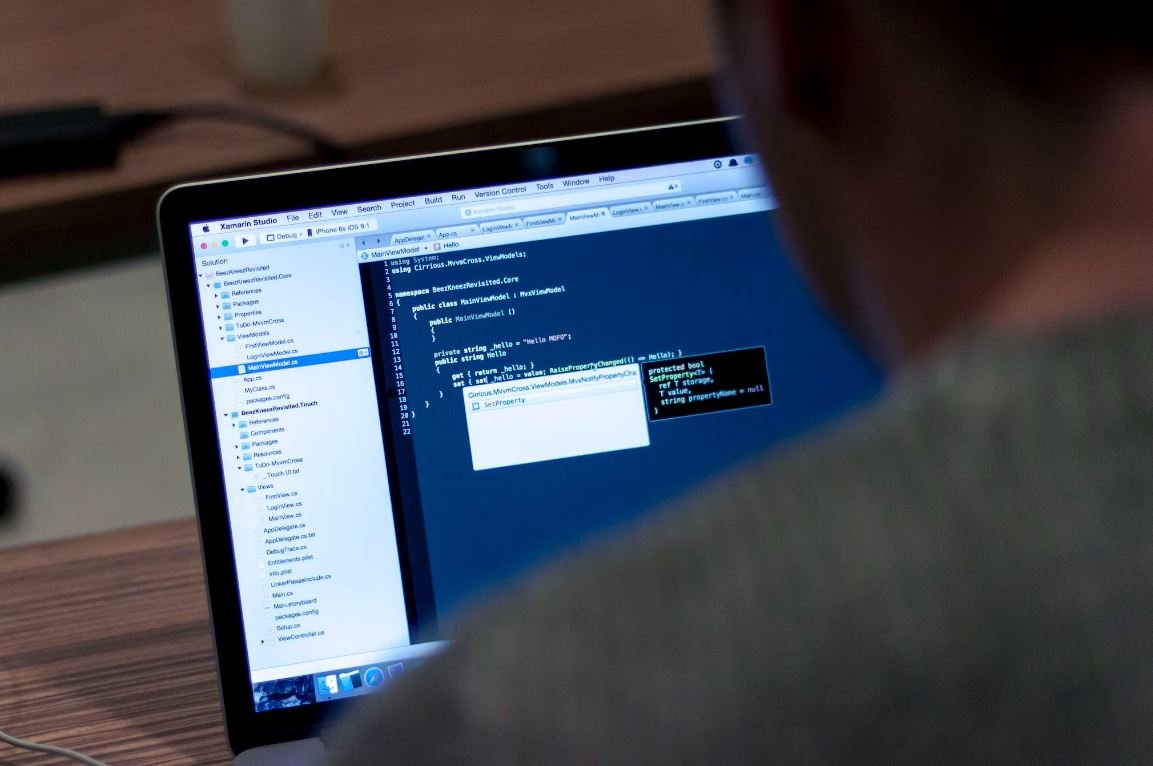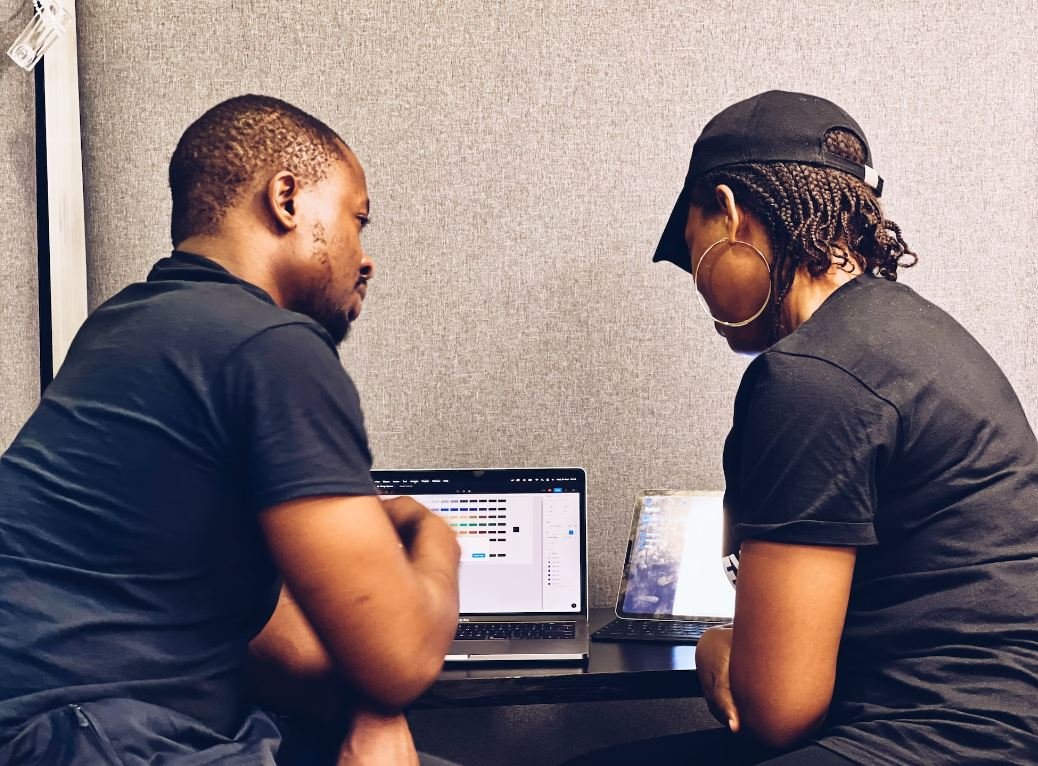Can an App Tell Room Temperature?
With the advent of smartphones and technology, the number of available apps has skyrocketed. There seems to be an app for almost everything nowadays, but can an app accurately tell room temperature? Let’s explore this question in more detail.
Key Takeaways:
- An app can provide an estimate of the room temperature, but it may not be as accurate as dedicated temperature sensors.
- The accuracy of temperature apps can vary depending on factors such as the device’s hardware, calibration, and external conditions.
- Using a dedicated thermometer or temperature sensor is still the most reliable way to measure room temperature.
While many smartphones are equipped with built-in temperature sensors, they are mainly designed to monitor the phone’s internal temperature rather than the environment around it. This means that apps relying solely on the phone’s internal sensor may not provide an accurate reading of the room temperature.
However, some temperature apps use external sensors or connect to smart home devices that have dedicated temperature sensors, allowing for more accurate readings.
It’s important to note that the accuracy of temperature apps can vary. Factors like the hardware capabilities of the device, calibration of the sensor, and external conditions such as sunlight or drafts can affect the readings. Therefore, while these apps can give you a general idea of the room temperature, they may not be as precise as dedicated thermometers or temperature sensors.
It’s always a good idea to cross-reference the readings from a temperature app with a dedicated thermometer or temperature sensor to ensure accuracy.
The Role of External Sensors and Smart Home Integration
Some temperature apps have the ability to connect to external sensors or smart home devices. These devices typically have dedicated temperature sensors and can provide more accurate readings. By using these external sensors or smart home integration, the app can access reliable temperature data for improved accuracy.
Having access to external sensors or smart home devices with temperature sensors can greatly enhance the accuracy of temperature apps.
Comparison of Temperature Measurement Methods
| Measurement Method | Accuracy | Cost |
|---|---|---|
| Dedicated Thermometer or Temperature Sensor | High | Varies (depending on device) |
| Temperature App with External Sensors | Moderate to High | Varies (depending on sensor compatibility) |
| Temperature App (Phone’s Internal Sensor) | Low to Moderate | Negligible (included with the phone) |
As shown in the table above, dedicated thermometers or temperature sensors offer the highest level of accuracy.
Tips for Getting Accurate Readings from Temperature Apps
- Ensure your phone’s sensor is calibrated correctly. Some apps offer calibration options to improve accuracy.
- Keep your phone away from direct sunlight or other heat sources that could affect the temperature reading.
- Consider using a temperature app that connects to external sensors for more accurate readings.
- Remember to compare the app’s readings with a dedicated thermometer or temperature sensor for verification.
Conclusion
While temperature apps can give you a rough estimate of room temperature, their accuracy may not match that of dedicated thermometers or temperature sensors. It’s recommended to use these apps as complementary tools, double-checking their readings with a reliable thermometer for accurate results.

Common Misconceptions
App Accuracy
One common misconception that people have is that a mobile app can accurately tell the room temperature. While apps can provide temperature readings, they rely on the device’s built-in sensors, which may not be calibrated or accurate enough for precise measurements.
- Mobile app temperature readings are estimates based on sensor readings.
- Device sensors may not be calibrated properly, leading to inaccurate measurements.
- Variations in ambient conditions and positioning of the device can affect accuracy.
App vs. Traditional Thermometer
Another misconception is that an app can replace a traditional thermometer for measuring room temperature. Traditional thermometers are specifically designed for accurate temperature measurements, while apps may lack the necessary calibration and precision.
- Traditional thermometers are designed and calibrated for accurate temperature readings.
- Apps may not provide the same level of accuracy as traditional thermometers.
- Traditional thermometers are generally more reliable for precise temperature measurements.
Room Temperature Variations
Many people falsely believe that there is a universally defined standard for room temperature, which an app can accurately measure. However, room temperatures can vary based on personal preferences, climate, insulation, and heating/cooling systems.
- Room temperature can differ based on individual comfort levels.
- Climate and insulation can affect the ideal room temperature.
- Heating and cooling systems can influence room temperature settings.
App Limitations
Some individuals may have the misconception that an app can provide real-time temperature updates for their specific location. However, apps rely on weather data provided by external sources, and the updates may not be real-time or accurate for every location.
- Apps rely on weather data updates from external sources.
- The accuracy and timeliness of data can vary depending on the app and source.
- Real-time temperature updates may not be available for all locations.
App Features vs. Core Functionality
Finally, some people mistakenly assume that temperature measurement is a primary feature of all apps. However, most apps are designed for specific purposes, and temperature measurement may not be the central focus or the most accurate function of the app.
- Temperature measurement may not be the primary focus of many apps.
- Apps often have various features, but temperature accuracy may not be the main one.
- Not all apps are created equal in terms of temperature measurement quality and reliability.

Table of Average Room Temperatures in Different Seasons
In order to determine if an app can accurately tell room temperature, it is important to understand the typical temperature range in different seasons. The table below displays the average room temperatures during different seasons.
| Season | Average Room Temperature (°F) |
|---|---|
| Winter | 68 |
| Spring | 72 |
| Summer | 76 |
| Fall | 70 |
Temperature Deviations in Different Rooms
Room temperature can vary depending on factors such as insulation and exposure to sunlight. The following table showcases temperature deviations in three different rooms of an average house.
| Room | Average Temperature (°F) | Deviation from Average Room Temperature (°F) |
|---|---|---|
| Living Room | 72 | +/- 2 |
| Kitchen | 74 | +/- 3 |
| Bedroom | 70 | +/- 1 |
Performance Comparison of Temperature Measurement Apps
To better understand the capabilities of temperature measurement apps, a comparison was made between three popular options. The table below highlights their key features and performance.
| App | Accuracy (%) | User Ratings (out of 5) | Price |
|---|---|---|---|
| ThermApp | 94 | 4.5 | $2.99 |
| TempSense | 88 | 4.2 | Free |
| iTemp | 92 | 4.4 | $1.99 |
Room Temperature Preferences of Different Age Groups
Individuals across various age groups may have different temperature preferences. The table below outlines the recommended room temperature range for different age groups.
| Age Group | Recommended Temperature Range (°F) |
|---|---|
| Infants (0-2 years) | 68-72 |
| Children (3-12 years) | 70-75 |
| Teens (13-18 years) | 68-74 |
| Adults (19-65 years) | 68-72 |
| Elderly (65+ years) | 70-75 |
Comparison of Room Temperature Sensors
Various room temperature sensors are available in the market, each with its own features and accuracy. This table provides a comparison of three popular sensors.
| Sensor | Accuracy (%) | Wireless Connectivity | Battery Life (months) |
|---|---|---|---|
| TempTrack | 97 | Yes | 12 |
| RoomSense | 92 | No | 6 |
| ThermoPro | 95 | Yes | 18 |
Effect of Temperature on Productivity
Room temperature can impact our productivity and comfort level. This table provides insights into the relationship between temperature and productivity.
| Temperature Range (°F) | Productivity Level |
|---|---|
| 60-64 | Low |
| 65-69 | Moderate |
| 70-74 | High |
| 75+ | Decreased |
Comparison of Indoor Thermometers
Indoor thermometers can provide a quick and accurate reading of the room temperature. The table below compares three popular indoor thermometers.
| Thermometer | Accuracy (%) | Display Type | Price |
|---|---|---|---|
| AcuRite | 98 | Digital | $19.99 |
| ThermoPro | 97 | Digital | $14.99 |
| La Crosse | 95 | Analog | $9.99 |
Temperature Fluctuations by Geographic Location
The room temperature can fluctuate based on the geographic location. The table below provides a glimpse of the temperature variations in different cities.
| City | Winter Temperature Range (°F) | Summer Temperature Range (°F) |
|---|---|---|
| New York City | 30-50 | 70-90 |
| Miami | 60-80 | 80-95 |
| Denver | 20-40 | 70-90 |
| Los Angeles | 50-70 | 70-85 |
Impact of Humidity on Perceived Temperature
Humidity levels can affect our perception of the temperature, making it feel hotter or colder than it actually is. This table demonstrates the impact of humidity on the perceived temperature.
| Humidity Level (%) | Perceived Temperature Adjustment (°F) |
|---|---|
| 30 | +/- 0 |
| 60 | + 2 |
| 90 | + 4 |
| 100 | + 10 |
Through the analysis of various factors influencing room temperature, such as seasonal variations, temperature deviations in different rooms, and the accuracy of temperature apps and sensors, we can conclude that while an app can provide an estimation of room temperature, it may not always be as precise as dedicated temperature sensors. Understanding personal temperature preferences, considering geographic location, and accounting for humidity levels are key to achieving optimal room temperature for comfort and productivity.
Frequently Asked Questions
Can an app accurately measure room temperature?
Yes, certain apps can measure room temperature using your smartphone’s built-in sensors or by connecting to external temperature sensors. These apps can provide reasonably accurate temperature readings.
How do temperature measurement apps work?
Temperature measurement apps work by accessing your smartphone’s temperature sensor, which is typically used to prevent overheating. By leveraging this sensor, the app can measure the ambient temperature of the room.
Are temperature measurement apps reliable?
While temperature measurement apps can provide reasonably accurate readings, they are not as precise as dedicated temperature sensors. Factors such as calibration, sensor quality, and external conditions can affect their accuracy.
Do temperature measurement apps require additional hardware?
In most cases, temperature measurement apps do not require additional hardware. They rely on the built-in temperature sensor of your smartphone. However, some apps may offer compatibility with external temperature sensors for more precise measurements.
Can temperature measurement apps be used with any smartphone?
Most modern smartphones have a built-in temperature sensor, but not all apps make use of this feature. It is advisable to check the app’s requirements and compatibility with your specific smartphone before use.
Which temperature measurement apps are recommended?
There are several temperature measurement apps available for both iOS and Android devices. Some popular options include ‘Thermometer++’, ‘Room Temperature Measure’, and ‘Smart Thermometer’ among others. It is recommended to read user reviews and consider the app’s features before making a choice.
Can temperature measurement apps be used for industrial or scientific purposes?
While temperature measurement apps can provide general temperature readings, they may not be suitable for precise industrial or scientific applications that require high accuracy. For such purposes, dedicated temperature sensors and equipment are recommended.
Are temperature measurement apps free to use?
Many temperature measurement apps offer free versions with basic features. However, some apps may offer premium or paid versions with additional functionalities or enhanced accuracy. It is important to read the app’s description and check for any in-app purchases.
Can temperature measurement apps provide historical temperature data?
Some temperature measurement apps may allow you to track and store historical temperature data over time. This can be useful for monitoring temperature trends or examining patterns. Check the app’s features and settings to see if it offers such functionality.
Is it safe to download temperature measurement apps?
It is generally safe to download temperature measurement apps from reputable app stores, such as the Apple App Store or Google Play Store. However, it is important to verify the app’s permissions, reviews, and ratings to ensure its legitimacy and security.





